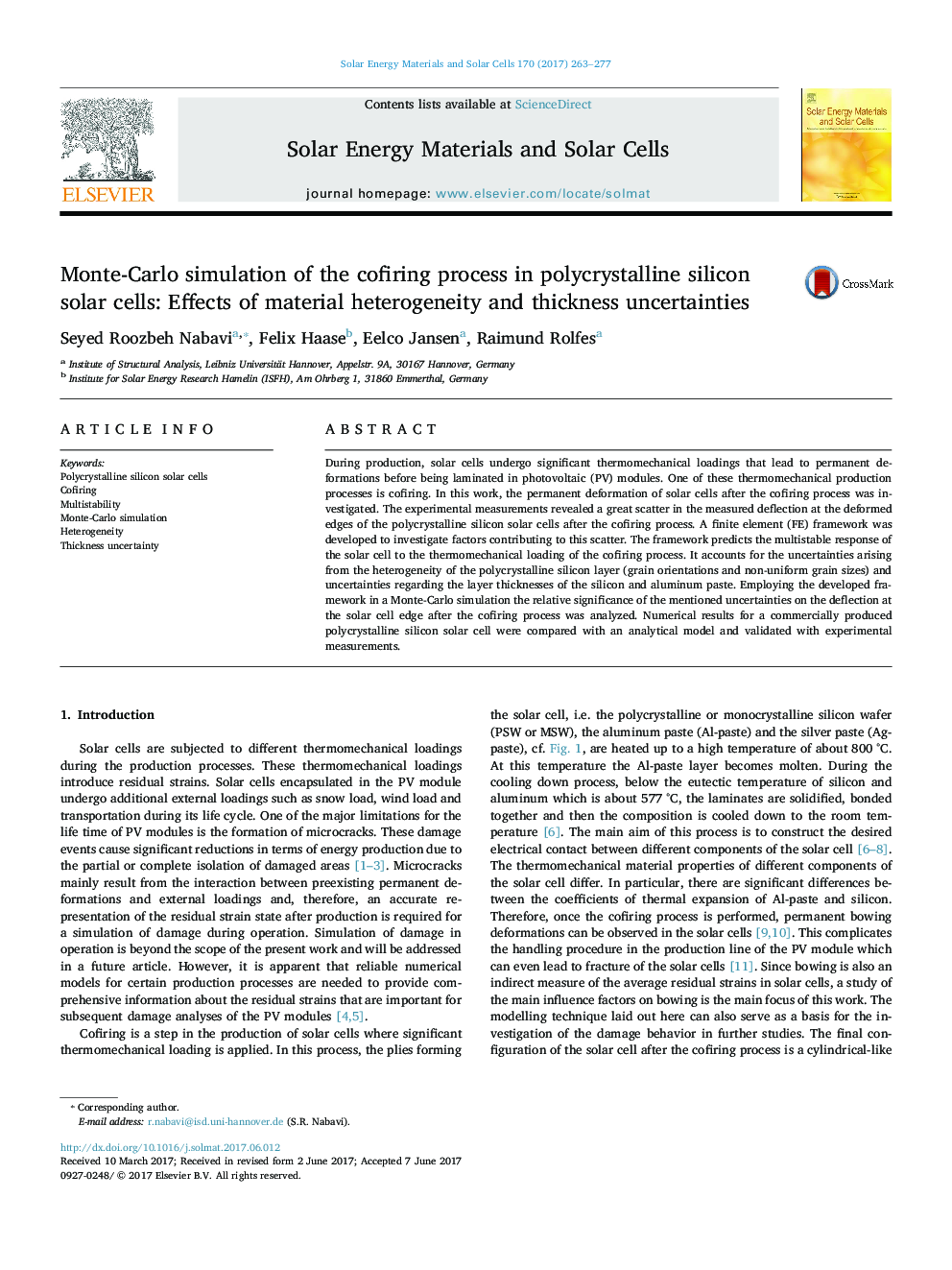| Article ID | Journal | Published Year | Pages | File Type |
|---|---|---|---|---|
| 6456855 | Solar Energy Materials and Solar Cells | 2017 | 15 Pages |
â¢The typical cylindrical-like configuration after the cofiring process is obtained by numerically solving a stability problem.â¢The maximum edge deflection of the solar cell after the cofiring process shows a considerable amount of scatter.â¢The scatter increases when the polycrystalline silicon wafer consists of larger grains.â¢The effect of the uncertainty regarding the Al-paste layer thickness on the scatter was found to be dominant.
During production, solar cells undergo significant thermomechanical loadings that lead to permanent deformations before being laminated in photovoltaic (PV) modules. One of these thermomechanical production processes is cofiring. In this work, the permanent deformation of solar cells after the cofiring process was investigated. The experimental measurements revealed a great scatter in the measured deflection at the deformed edges of the polycrystalline silicon solar cells after the cofiring process. A finite element (FE) framework was developed to investigate factors contributing to this scatter. The framework predicts the multistable response of the solar cell to the thermomechanical loading of the cofiring process. It accounts for the uncertainties arising from the heterogeneity of the polycrystalline silicon layer (grain orientations and non-uniform grain sizes) and uncertainties regarding the layer thicknesses of the silicon and aluminum paste. Employing the developed framework in a Monte-Carlo simulation the relative significance of the mentioned uncertainties on the deflection at the solar cell edge after the cofiring process was analyzed. Numerical results for a commercially produced polycrystalline silicon solar cell were compared with an analytical model and validated with experimental measurements.
